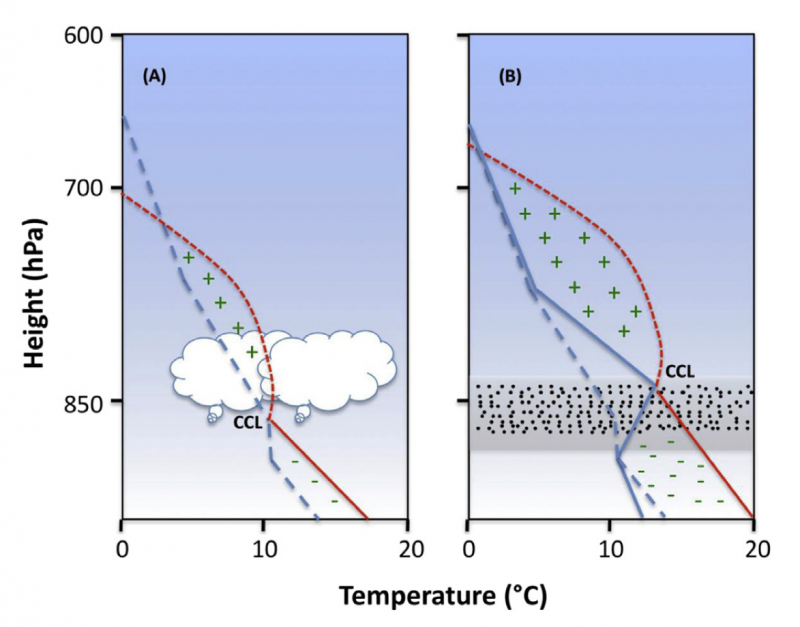Box 8.1, Figure 2
Figure caption
Box 8.1, Figure 2 | Schematic depiction of the atmospheric effects of light-absorbing aerosols on convection and cloud formation: (a) without and (b) with the presence of absorbing aerosols in the planetary boundary layer. The dashed and solid blue lines correspond to the vertical temperature profiles in the absence and presence of the absorbing aerosol layer, respectively, and the solid and dashed red lines denote the dry and moist adiabats, respectively. Absorbing aerosols result in an increasing temperature in the atmosphere but a reduced temperature at the surface. The reduced surface temperature and the increased temperature aloft led to a larger negative energy associated with convective inhibition (–) and a higher convection condensation level (CCL) under the polluted conditions. On the other hand, the absorbing aerosol layer induces a larger convective available potential energy (+) above CCL, facilitating more intensive vertical development of clouds, if lifting is sufficient to overcome the larger convective inhibition. Figure from Y. Wang et al. (2013).
